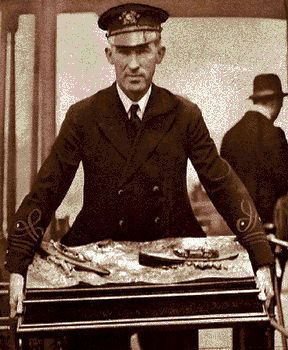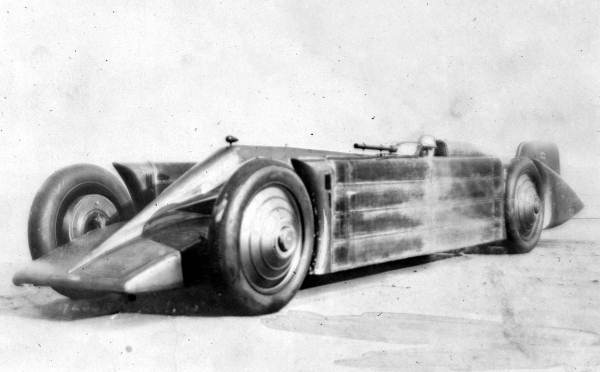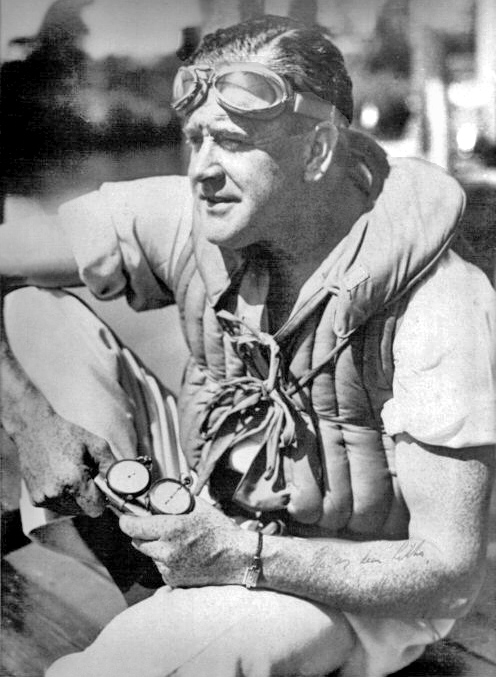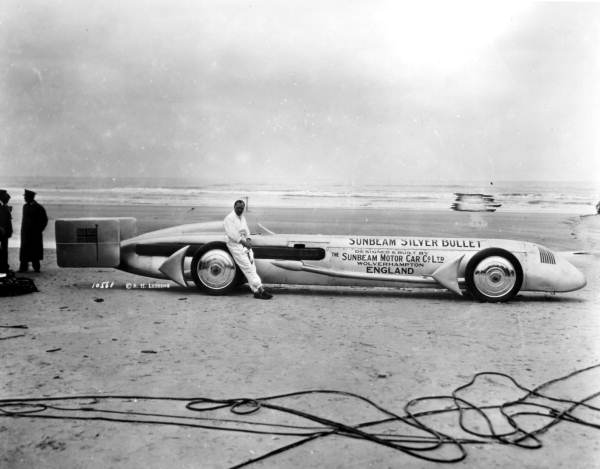|
Miss England I
''Miss England I'' was the first of a series of speedboats used by Henry Segrave and Kaye Don to contest world water speed records in the 1920s and 1930s. Design and construction ''Miss England'' was built for Henry Segrave in 1928, in an attempt to retrieve the Harmsworth Trophy from the American Gar Wood. Gar Wood's series of "Miss America" boats were using multiple high-powered aero-engines to establish an apparently unbeatable record. Segrave had already used multiple aero-engines in his land-speed record setting Sunbeam, but ''Miss England'' used a single Napier Lion engine and relied on an advanced planing hull design. The hull was of an advanced lightweight construction, which some designers, including Gar Wood, regarded as too light and flexible. Wood made many sportsmanlike contributions to his competitor, particularly sharing his experience of propeller and rudder design - he wanted a close race with a worthy opponent. Racing career ''Miss England'' raced succ ... [...More Info...] [...Related Items...] OR: [Wikipedia] [Google] [Baidu] |
United Kingdom
The United Kingdom of Great Britain and Northern Ireland, commonly known as the United Kingdom (UK) or Britain, is a country in Europe, off the north-western coast of the continental mainland. It comprises England, Scotland, Wales and Northern Ireland. The United Kingdom includes the island of Great Britain, the north-eastern part of the island of Ireland, and many smaller islands within the British Isles. Northern Ireland shares a land border with the Republic of Ireland; otherwise, the United Kingdom is surrounded by the Atlantic Ocean, the North Sea, the English Channel, the Celtic Sea and the Irish Sea. The total area of the United Kingdom is , with an estimated 2020 population of more than 67 million people. The United Kingdom has evolved from a series of annexations, unions and separations of constituent countries over several hundred years. The Treaty of Union between the Kingdom of England (which included Wales, annexed in 1542) and the Kingdom of Scotland in 170 ... [...More Info...] [...Related Items...] OR: [Wikipedia] [Google] [Baidu] |
Harmsworth Trophy
The Harmsworth Cup, popularly known as the Harmsworth Trophy, is a historically important British international trophy for motorboats. History The Harmsworth was the first annual international award for motorboat racing. Officially, it is a contest not between boats or individuals but between nations. The boats were originally to be designed and built entirely by residents of the country represented, using materials and units built wholly within that country. The rules were somewhat relaxed in 1949 and may have been relaxed further since. It was founded by the newspaper publisher Alfred Charles William Harmsworth (later Lord Northcliffe) in 1903. In 1903, the course was from Cobh (Queenstown) to the marina in Cork, Ireland. It was a poorly organised affair, with many boats failing even to start due to the British organisers claiming the French boats were not completely built in France, and thus they were excluded from the race. Thus there were three entries, but the organisers ... [...More Info...] [...Related Items...] OR: [Wikipedia] [Google] [Baidu] |
Science Museum (London)
The Science Museum is a major museum on Exhibition Road in South Kensington, London. It was founded in 1857 and is one of the city's major tourist attractions, attracting 3.3 million visitors annually in 2019. Like other publicly funded national museums in the United Kingdom, the Science Museum does not charge visitors for admission, although visitors are requested to make a donation if they are able. Temporary exhibitions may incur an admission fee. It is one of the five museums in the Science Museum Group. Founding and history The museum was founded in 1857 under Bennet Woodcroft from the collection of the Royal Society of Arts and surplus items from the Great Exhibition as part of the South Kensington Museum, together with what is now the Victoria and Albert Museum. It included a collection of machinery which became the ''Museum of Patents'' in 1858, and the ''Patent Office Museum'' in 1863. This collection contained many of the most famous exhibits of what is now t ... [...More Info...] [...Related Items...] OR: [Wikipedia] [Google] [Baidu] |
British Honours System
In the United Kingdom and the British Overseas Territories, personal bravery, achievement, or service are rewarded with honours. The honours system consists of three types of award: *Honours are used to recognise merit in terms of achievement and service; *Decorations tend to be used to recognise specific deeds; *Medals are used to recognise service on a particular operation or in a specific theatre, long or valuable service, and good conduct. Appointments to the various orders and awards of other honours are usually published in ''The London Gazette''. Brief history Although the Anglo-Saxon monarchs are known to have rewarded their loyal subjects with rings and other symbols of favour, it was the Normans who introduced knighthoods as part of their feudal government. The first English order of chivalry, the Order of the Garter, was created in 1348 by Edward III. Since then, the system has evolved to address the changing need to recognise other forms of service to the Uni ... [...More Info...] [...Related Items...] OR: [Wikipedia] [Google] [Baidu] |
Golden Arrow (land Speed Racer)
Golden Arrow was a land speed record racer built in Britain to regain the world land speed record from the USA. Henry Segrave drove the car at 231.45 mph (372.46 km/h) in March 1929 on Daytona Beach, exceeding the previous record by 24 mph (39 km/h). The car Built for ex-Sunbeam racing driver Major Henry Segrave to take the Land Speed Record from Ray Keech, ''Golden Arrow'' was one of the first streamlined land speed racers, with a pointed nose and tight cowling. Power was provided by a 23.9 litre (1462 ci) W12 Napier Lion VIIA aeroengine, specially prepared by Napiers, designed for the Supermarine aircraft competing in the Schneider Trophy, producing 925 hp (690 kW) at 3300 rpm. The car was designed by ex-Sunbeam engineer, aero-engine designer and racing manager Captain John Samuel Irving (1880-1953).Captain J. S. Irving. ''The Times'', Tuesday, 31 Mar 1953; pg. 8; Issue 52584. It featured ice chests in the sides through which coolant ran and a telescop ... [...More Info...] [...Related Items...] OR: [Wikipedia] [Google] [Baidu] |
Sunbeam 1000 Hp
The Sunbeam 1000 HP ''Mystery'', or "''The Slug''", is a land speed record-breaking car built by the Sunbeam car company of Wolverhampton that was powered by two aircraft engines. It was the first car to travel at over 200 mph. The car's last run was a demonstration circuit at Brooklands, running at slow speed on only one engine. It is today on display at the National Motor Museum, Beaulieu. Design Louis Coatalen's Automobiles Talbot-Darracq team was short of funds and so little new development was possible. The engines were a pair of Sunbeam Matabele 22.4 litre aircraft engines, previously used in a powerboat. Although best known as the "1000 HP" car, its actual power was closer to 900 hp (670 kW). One engine was mounted ahead of the driver, one behind. The rear engine was started first by compressed air, then the front engine was started through a mechanical friction clutch. Once synchronised, they were locked together with a dog clutch for the record attempt ... [...More Info...] [...Related Items...] OR: [Wikipedia] [Google] [Baidu] |
Aircraft Engine
An aircraft engine, often referred to as an aero engine, is the power component of an aircraft propulsion system. Most aircraft engines are either piston engines or gas turbines, although a few have been rocket powered and in recent years many small UAVs have used electric motors. Manufacturing industry In commercial aviation the major Western manufacturers of turbofan engines are Pratt & Whitney (a subsidiary of Raytheon Technologies), General Electric, Rolls-Royce, and CFM International (a joint venture of Safran Aircraft Engines and General Electric). Russian manufacturers include the United Engine Corporation, Aviadvigatel and Klimov. Aeroengine Corporation of China was formed in 2016 with the merger of several smaller companies. The largest manufacturer of turboprop engines for general aviation is Pratt & Whitney. General Electric announced in 2015 entrance into the market. Development history * 1848: John Stringfellow made a steam engine for a 10-foot wingspan mod ... [...More Info...] [...Related Items...] OR: [Wikipedia] [Google] [Baidu] |
Gar Wood
Garfield Arthur "Gar" Wood (December 4, 1880 – June 19, 1971) was an American inventor, entrepreneur, and championship motorboat builder and racer who held the world water speed record on several occasions. He was the first man to travel over 100 miles per hour on water. Early life Gar Wood was born on December 4, 1880 in Mapleton, Iowa, into a family of 13 children. His father was a ferryboat operator on Lake Osakis, Minnesota, and Gar worked on boats from an early age. In 1911, at age 31, he invented a hydraulic lift for unloading coal from rail trucks. Garwood Industries He established the Wood Hoist Co. in Detroit, Michigan, and soon became a successful businessman. Later, he changed the company's name to Garwood Industries, which built racing and pleasure boats under the ''Gar Wood'' brand. Wood also capitalized on experience with coal unloaders to successfully produce and market ''GarWood'' truck, bus and coach bodies. He had a home in Algonac, Michigan. Garwo ... [...More Info...] [...Related Items...] OR: [Wikipedia] [Google] [Baidu] |
Hubert Scott-Paine
Hubert Scott-Paine (11 March 1891 – 14 April 1954) was a British aircraft and boat designer, record-breaking power boat racer, entrepreneur, inventor, and sponsor of the winning entry in the 1922 Schneider Trophy. Early life Hubert Paine was born in Shoreham-by-Sea, England, on 11 March 1891, to Henry Paine and Rosannah (née Scott). He was educated at Shoreham Grammar School.Rance. Fast Boats and Flying Boats. p. 10 Supermarine Scott-Paine worked for Noel Pemberton Billing dealing in yachts, eventually in 1913 forming Pemberton-Billing Ltd (with 'Supermarine' as the telegraphic address), with Hubert the factory manager at Woolston, Hampshire. In 1916 Scott-Paine bought the company and renamed it the Supermarine Aviation Company Limited, building flying boats for the British Admiralty. Reginald Mitchell (of Spitfire fame) was employed at this time and the company greatly expanded. Hubert married Alice Brenda Hockey in 1917, having four children. By this time he had chan ... [...More Info...] [...Related Items...] OR: [Wikipedia] [Google] [Baidu] |
Kaye Don
Kaye Ernest Donsky (10 April 1891 – 29 August 1981), better known by his ''nom de course'' Kaye Don, was an Irish world record breaking car and speedboat racer. He became a motorcycle dealer on his retirement from road racing and set up Ambassador Motorcycles. Early life Kaye Ernest Donsky was born in Dublin on 10 April 1891. He was of Polish ancestry and shortened his name to Don. He was brought up in Kingston-upon-Thames and was an RFC pilot during the First World War. Early racing career Kaye Don began his career as a motorcycle racer but soon switched to cars and won the inaugural 1928 Ards-Belfast circuit, Northern Ireland, Tourist Trophy with a Lea-Francis. Between 1926 and 1928 Kaye raced a 1921 Grand Prix Sunbeam at Brooklands which was an ex-Malcolm Campbell 'Blue Bird' and extensively contributed to what W Boddy described as "the best run of success by any Brooklands car in such a period". In 1928 he had three ex-works Sunbeam cars which he named "Cub", "Tiger" ... [...More Info...] [...Related Items...] OR: [Wikipedia] [Google] [Baidu] |




